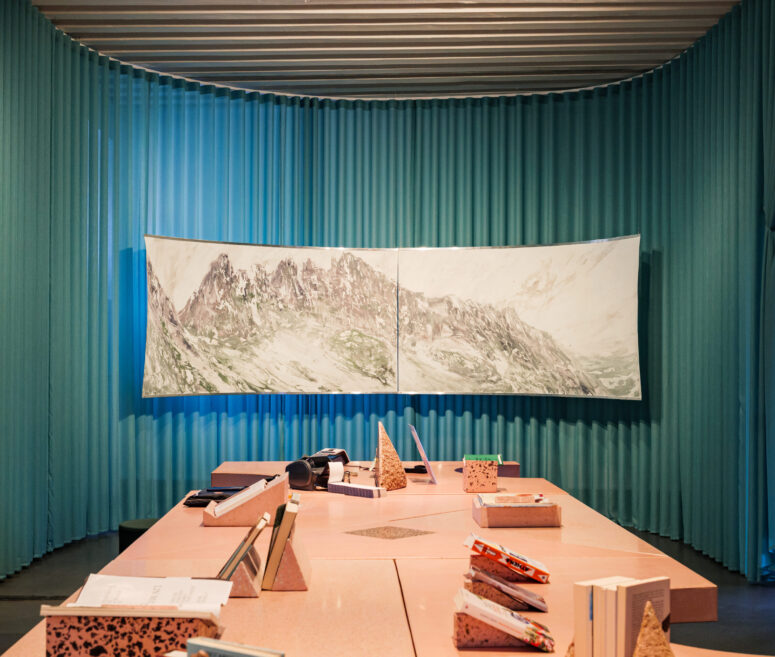Becoming Mountain, a monumental pictorial installation by Pedro Vaz (Maputo, 1977), will also be presented. The work is inspired by the mountain landscape of the Alta Via delle Orobie Bergamasche and developed following a trekking experience through these mountains.
The painting depicts a view of the Presolana, conveyed through the gaze and direct encounter of the Portuguese artist: an approach that fully reflects his practice, grounded in direct contact with remote places. These are explored through expeditions that stimulate an immersive, bodily experience, from which Vaz’s creative process emerges, poised between figuration and abstraction.
The work enters into dialogue with Veduta del Pizzo della Presolana (1908) by Ermenegildo Agazzi, displayed at the entrance of the museum: a celebration of the massive Orobie peak, observed from a distant vantage point, which highlights the monumentality of its eastern wall. The perspective adopted by Agazzi reflects the nineteenth-century pictorial tradition of landscape painting, where nature was conceived as an object of aesthetic contemplation, viewed from afar and mediated by the human gaze.
More than a century later, Pedro Vaz approaches the same mountain with a radically different attitude. In August 2025, the artist undertook a three-day journey of nearly twenty kilometers, from Castione della Presolana to Colere, remaining side by side with the mineral wall — “so close that the horizon disappears.” The mountain becomes present, powerful, visceral; at its side, “the body ceases to be a spectator and becomes part of the mountain itself.”
In narrating the landscape as a lived and embodied experience, Vaz creates a large-scale painting executed on hanged paper. The view of the Presolana surrounds visitors through a concave curved structure, bringing them into close proximity with the painted surface, as though facing the dolomitic wall itself. In contrast with plein-air painting (and from a distance) typical of nineteenth-century painters, Vaz traces the contours of the alpine massif by relying on the memory of his walk. Through a process that eludes total control, he layers pigment on paper and then partially washes it away with water, generating unpredictable shadows and gradients.
The title of the Orobie Biennial, Thinking Like a Mountain, finds concrete expression in Vaz’s project, Becoming Mountain: an invitation to embrace the physicality of nature, to encounter it bodily rather than only visually — not to illustrate the mountain, but to live with intensity of being inside the mountain.





